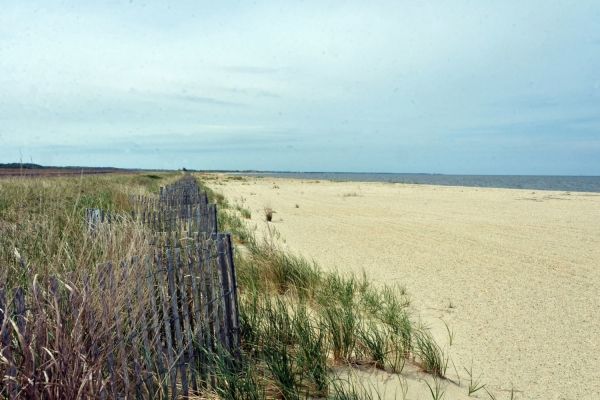Standing atop a 10-foot dune at the Prime Hook National Wildlife Refuge on Delaware Bay, refuge manager Al Rizzo describes one of the largest and most complex wetlands restoration projects ever mounted, a $38 million attempt to return 4,000 acres back to what nature intended.
Contractors hired by the U.S. Fish and Wildlife Service dredged more than 1 million cubic yards of sand from Delaware Bay to create 2 miles of beach and barrier dune that had been washed away by a series of storms beginning in 2006 and culminating with Hurricane Sandy in 2012. To stabilize the recreated dune, workers then planted half-a-million American beachgrass plugs and erected 10,000 feet of fencing. Down the beach, Fish and Wildlife staff are enclosing the nests of piping plovers, a threatened species that started breeding at the refuge only three years ago.
Inland, new plantings of Spartina patens — a native salt meadow grass that’s sensitive to water levels and salinity — poke out of the ground, an indicator of a healthy marsh. And throughout the Prime Hook wetlands, dredges have carved 25 miles of channels in an attempt to restore the natural flow of salty and brackish water. The 600,000 cubic yards of sediment produced by that project were cast onto the banks, creating sand flats that are being colonized naturally by Spartina alterniflora, another native grass.
Read more at Yale Environment 360
Photo: A newly created sand dune with recently planted american beachgrass at the Prime Hook refuge. JIM MORRISON/YALE E360


